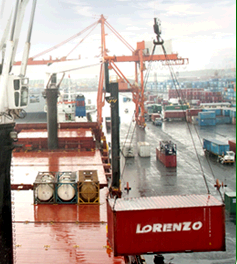
Philippine carrier Lorenzo Shipping Corporation (LSC) has reported a narrowed net loss of P78.447 million in the first half of 2017, brought about by higher revenues and increased cargo volumes.
The January-June 2017 net loss was smaller than the P230.867 million loss recorded in the same period last year. Revenues for the first half of the year amounted to P1.147 billion, 4% higher than the P1.107 billion earned in the same semester last year.
LSC, in a regulatory disclosure, said this is due to an 18% increase in volumes handled during the period coming from recaptured lost accounts and acquired new ones.
The improvement was also achieved even though “current freight rates were lower in comparison with 2016 average rates brought about by higher industry TEU (twenty-foot equivalent unit) supply and the number of vessels servicing the domestic trade,” LSC explained.
Gross profit ended in negative territory at P2.8 million in 2017, but is an improvement on the P11.5 million loss last year. LSC said direct costs slightly increased to P1.140 billion, 3% higher than the P1.118 billion posted last year. The company said additional costs on container yard rentals caused by new port authority regulations on dock storage space, and materials/supplies used for repairs and maintenance of containers and machinery and equipment “put pressure on the gross profit.”
The domestic carrier, which has been reporting losses since 2015, is currently executing a major turnaround project in a bid to return to profitability.
Part of the strategy is the constant review of vessel and service combination to ensure the right asset for a particular route given changing market conditions. A flexible and situational pricing scheme is also being adopted, while efforts are being done to renegotiate the terms of contracts of big-volume accounts.
Further, the company is working to significantly reduce operating costs like those on trucking, terminal, lift-on, lift-off, and container van rental through a more focused and agile organization and the use of appropriate technology.
Emphasis is being given as well to substantially bringing down repositioning costs through intensified marketing and sales efforts northbound. Fuel and lube oil consumption is being managed, too, through constant engine performance analysis along with adjusting vessels’ speed where necessary.




